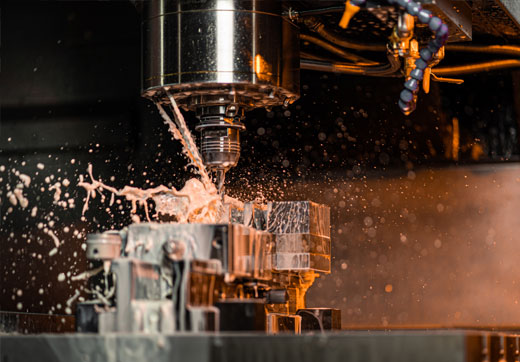
Graphite: A Self-Lubricating Material
When people think about graphite applications, what usually comes to mind (well, besides pencils, which everyone knows about) are crucibles or other graphite components used in high-heat environments. Graphite’s heat tolerance is a well-known quality of this wonder material. But among the most common graphite applications in industry is the use of graphite as a lubricant.
Lubrication in mechanical systems is essential to the proper operation of the system. Mechanical systems that are composed of components designed to interact with each other, through friction, will have to take into account possible issues such as heat build-up and wear. Designing proper lubrication for mechanical systems can make the difference between a system that functions within parameters, and one that does not, or worse, one that fails. If you’ve ever run your car engine without oil, you know how devastating a lot of friction is to a mechanical system not equipped with appropriate lubrication.
When considering what kind of lubricant is the most effective and efficient for a particular mechanical system, it is important to understand that not all lubricants are created equal. A good lubricant must contribute to the proper and efficient maintenance of the system. It is true that all systems require maintenance at some point. In some cases, though, maintenance is fairly easy, cheap, and rare, while in other cases, maintenance can be a very costly aspect of the whole system design and operation. With standard lubrication, there are often high costs associated with cleaning and replacing the lubricant (since they often fill with foreign contaminants), and then there is the fact that companies must schedule regular maintenance, which can shut down production for a period, costing the company a lot of money. All these aspects of regular maintenance can constitute a hidden cost to companies that can frankly turn into a money trap.
Self-lubrication materials like graphite can be great alternatives to typical lubricants. This graphite application helps keep mechanical systems clean as graphite lubricants do not contaminate. And graphite is so durable as a lubricant that there is typically no need for a regular maintenance schedule. The material offers a virtually maintenance-free system.
Graphite is a great lubricant for other reasons as well. It withstands various conditions that are detrimental to typical lubricants, such as high operating temperatures. And since graphite is inert and thus relatively non-reactive with other substances, it can operate in environments that are chemically contaminated. On top of these reasons, graphite is also a self-lubricating material.
The self-lubricating properties of graphite are made possible by its structure. Graphite has a layered structure, and while each layer is strong, the connection between individual layers is quite weak. That allows the layers to move and slide against each other. Also, given that graphite is a relatively soft material, when it is deposited on other components that it comes into contact with, it improves the lubrication rather than gumming up the works.
When in the market for any kind of graphite component or graphite application, there are always various graphite grades to choose from. While all graphite grades have self-lubrication properties, it is recommended that you discuss your project with graphite specialists if you are considering a self-lubricating system.
Here at Semco, our team has 40+ years of experience with graphite. We are ready to assist you with all your graphite needs, including helping you determine the best way to use graphite as a lubricant in your mechanical system.
